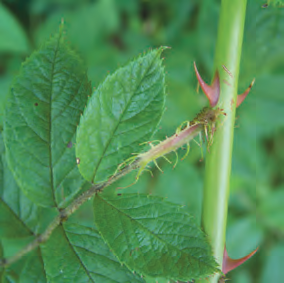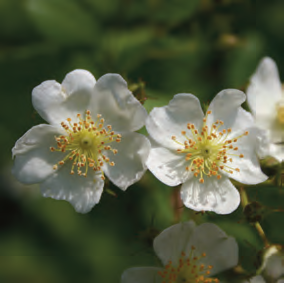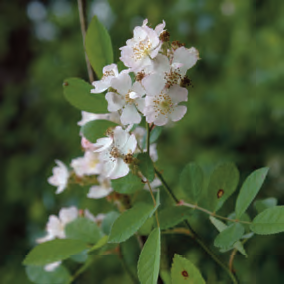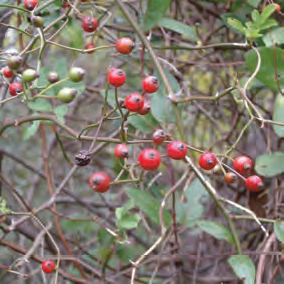Multiflora Rose
Rosa multiflora
Rose Family (Rosaceae)
Deciduous Shrub
Flowers: May–Jun
Fruits: Aug–winter
Native Range: Japan, Korea
Introduction: as a rootstock for rose cultivation in 1866. In the 1930s, it was widely promoted for erosion control and as a living fence. State agencies continued to promote it for wildlife for decades.
Mid-Atlantic Range & Habitats: Open woodlands, forest edges, old fields, and thickets, throughout. Tolerates shade but does not flower heavily when shaded.


Multiflora Rose provides winter cover and food for songbirds and is an important food source for some overwintering fruit-eating species such as Northern Mockingbird. Despite these benefits, the species displaces native vegetation, especially in old fields and open riparian areas, where impenetrable thickets of Multiflora Rose often develop. Inmany areas, this species is afflicted with amite-vectored viral disease, which may help slow its spread in areas of marginal habitat suitability.

Quick ID
- Stipules: Stipules fringed with long, thin projections on the margin
- Flowers: Flowers white (occasionally pinkish)
- Flowers: Clusters of many flowers, found only at the end of branches (terminal)

More ID Tips
Multiflora Rose tends to formlarger, taller,more extensive shrubs than the native rose species. The hips or fruits of Multiflora Rose are approximately 5 mm in diameter, smaller than most native rose species.

